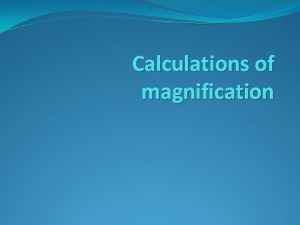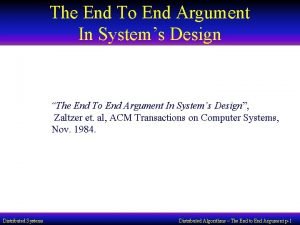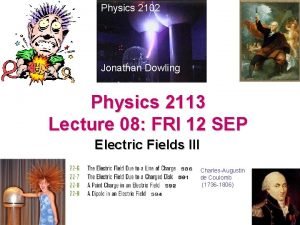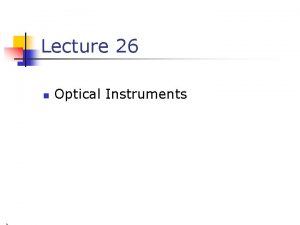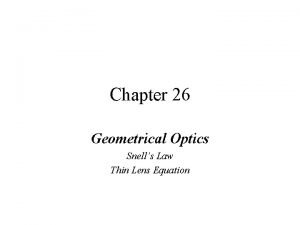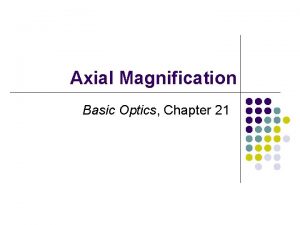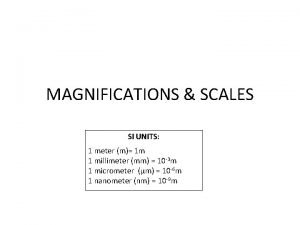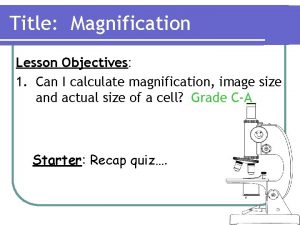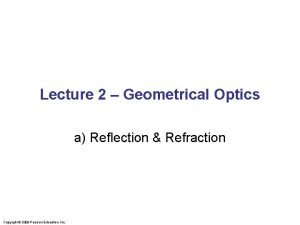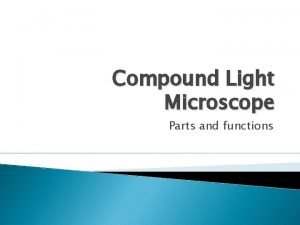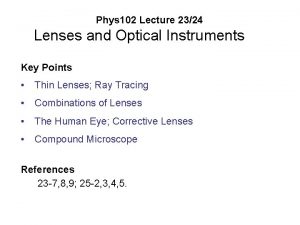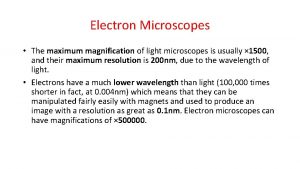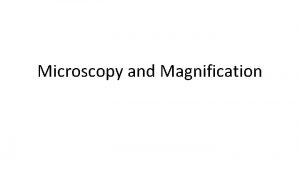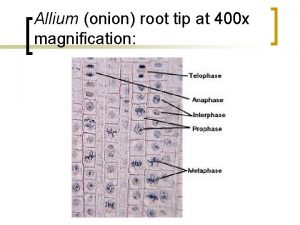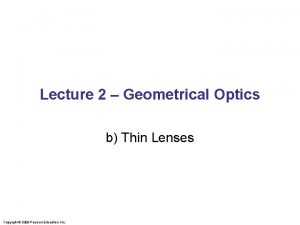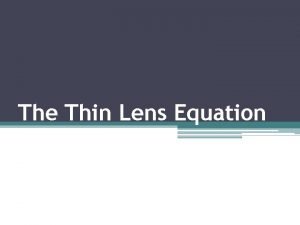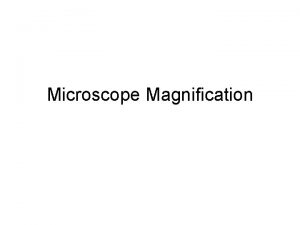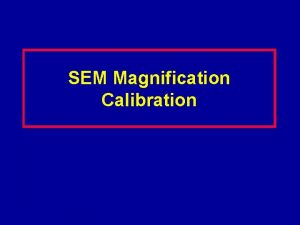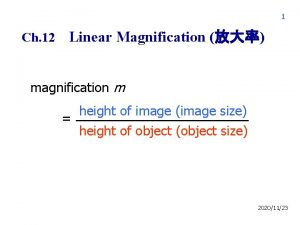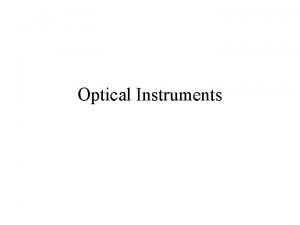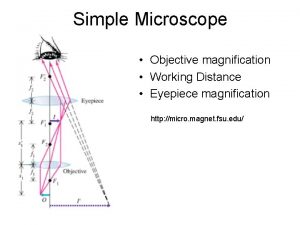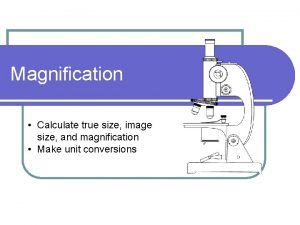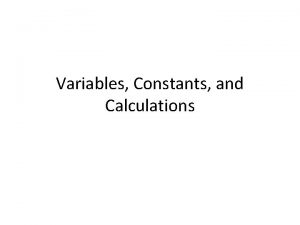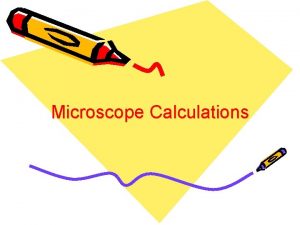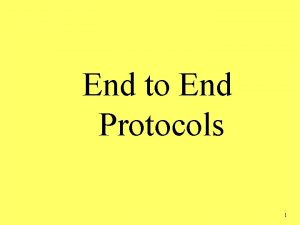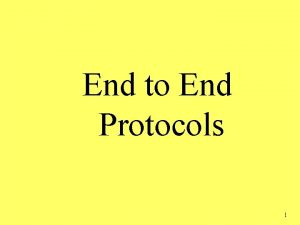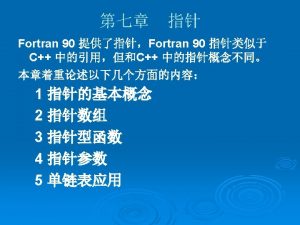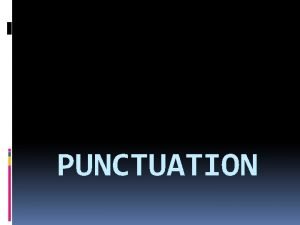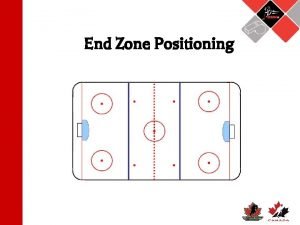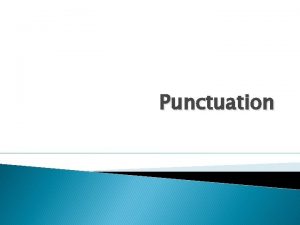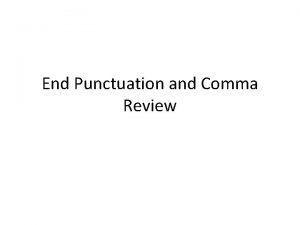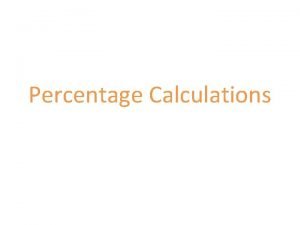Calculations of magnification Session outcomes At the end

































- Slides: 33

Calculations of magnification

Session outcomes At the end of this topic, learners should be able to: ü Calculate the necessary magnification to achieve patient goals for both distance and near ü Understand be able to do all the calculations regarding magnification as stipulated in this topic ü Measure text size and calculate the appropriate magnification to achieve that goal

Management options for low vision patients �Reduction of working distance �Magnification �Training in eccentric fixation �Minification �Prisms �Illumination control

Magnification �It is essential in cases of central vision loss. �This requires few practices or training session until the patient get it right. �Magnification may be in the form of non-optical devices such as electronic devices, and also in the form of optical devices. �Decision to use magnification method is followed by the establishment of the power needed for magnification.

Calculation of distance and near magnification

Distance magnification �Feinbloom chart is used �Uses numbers: 700 -10 �Used at 10 ft or closer �Recorded: Test distance/Letter size e. g. 10/80 �Convert to 20 ft �Note the patient head posture : up/down or left/right Why? ?

Calculating magnification for telescopes �The commonly used method is: VA achieved/ �M required = VA required �The examiner should be able to estimate the VA which will be needed (goal or desired VA) for the particular task. �For most daily distance activities, 6/12 (20/40) are considered to be goal VA.

Example: 1 �A patient has a current corrected VA of 10/60 (3/18) at 10 feet (3 meters), this is equivalent to 20/120 or 6/36 respectively in 6 meters. If it is estimated that the patient will achieve his or her reading goal if he or she can read 20/40 or 6/12.

VA achieved/ �M required = VA required = 120/40 = 3 x • The telescope of the same power should then be tried on a patient and refined using other power subjectively to establish the power acceptable for the patient.

Example 2: Calculate magnification for the following patient. Px S can read 2/30 prints and wishes to read 10/20, what magnification would be required? All calculations must be shown!!

Solution 2/30=20/x x = 600/2 x = 300 10/20=20/x x = 400/10 x= 40 M= 7. 5 x

Calculation of magnification for Magnifiers �Best corrected near VA values are usually used to calculate the estimated power of the magnifier required to read at near. �Different charts requires different ways of calculating power. �Log. Mar and lighthouse charts to be discussed shortly

M-notation �Its a metric notation �Represents the distance in meter. �The target size and the test distance must always be noted �If the patient reads 6 M at 40 cm �Acuity is recorded as: 0. 4/6 M =40/600 =20/300

Determining M value �Measure the height of lower case letters in mm, and multiply by 0. 7 for the M value � 1 mm = 0. 7 M � 1. 45 mm = 1 M

Converting between the different optotypes: �M to N: x 8 �N to M: divide by 8 �(1 M = 8 N)

Method 1 �The lighthouse or precision vision near chart �It gives the appropriate add – not the magnification required �useful for high-plus readers and hand magnifiers �Snellen acuities of this chart are calculated on a 40 cm working distance

�If one uses 40 cm, then magnification is represented by the formula M=D/2. 5 �Patient should hold the card at 40 cm with +2. 50 Add and read the smallest line possible

�Example 1: A patient can read 5 M print and wants to read 1 M print, therefore 5 x magnification is required, so the card will be moved 5 x closer to obtain magnification 40/5=8 cm Questions? ?

The power needed is +12. 50 D, how did we achieve this power? • Lastly place this power on the trial frame and let the patient read at 8 cm

�An add can also be obtained by multiplying the M-Value and the D-Value 5 x 2. 5 = +12. 5 D then working distance can be calculated from the power obtained: 1/12. 5=8 cm

OR • It can be taken directly from the chart (during patient examination) • Remember , it still has to be refined using the trial frame.

�Summary of different methods of obtaining an Add using Lighthouse 1. To bring the chart closer 2. Multiply M-Value and D-Value 3. Read an Add directly from the chart

Method 2 �For calculation of magnification powers using charts which do not have powers indicated �This method has to be used: VA achieved/ �M required = VA required �If a patient can read 6/60 (20/200) at 25 cm and wishes to read 6/24 (20/80) at the same distance �Magnification will be 60/24 or 200/80 = 2. 5 x �This is equivalent to +10. 00 D lens

Method 3 �This is called the Kestenbaum’s method �It is based on the dioptres of add needed to read 1 M print and is approximately equal to the reciprocal of the distance acuity.

�If a patient can read 6/120 at 6 m, the near addition required is considered to be 120/6 which is = +20. 00 D �This method is NOT accurate, but may provide a basis for subjective determination of the power of magnification.

Method 4 �Determination based on the current add and magnification required for goal VA �Example: a patient can read 4 M print at 40 cm with an add of +2. 50 D, what add will he require to read 1 M print? �Solution? : it should be noted that 4 M is 4 times as large as 1. 0 M, therefore magnification required is 4 times. �The required power will be 4 x+2. 5 D= +10. 00 D �Magnification is approximately 2. 5 x

Method 5 �The use of Log. MAR method to calculate magnification at near. �This is applicable ONLY if the near Log. Mar chart is used. �The calculation is based on the current ratio of current VA and the goal VA of the patient based on the Log. MAR ratio of 1. 2589 (0. 1 log unit).

Example 1: �A patient can read 30 point print at 25 cm, but his goal is to read 12 point print. �The ratio between these two reading acuity values is 4. �This achieved by dividing 30 by 1. 2589 until you get to 12, then the number of steps will be the magnification.

�This magnification can be achieved by increasing the Dioptric power of 25 cm for times. �The Dioptric power of 25 cm is +4. 00 D �Therefore the power needed to provide 4 x magnification is 4 x 4= +16. 00 D

Example 2: �Also, magnification can be achieved by reducing the working distance to a quarter of the original value. �A fourth of 25 cm is 6. 25 cm �The Dioptric value of 6. 25 is +16. 00 D �This power can be in a form of accommodation or magnifier.

Poor reading performance �The following factors may result in poor reading performance: 1. Indication of need for more magnification 2. Need for eccentric viewing 3. Resistance to close working distance or

Illumination control �It is necessary to try various level of illumination that best suits each patient. �High, medium or low levels should be tried in improving the patient’s performance.

�Controlling illumination can results in a significant improvement in vision for some patient. �With changes in illumination, the power of the magnifier may be adjusted if necessary.
 Feinbloom chart
Feinbloom chart Types of connections in steel structures
Types of connections in steel structures End to end delay
End to end delay Ejection fraction vs stroke volume
Ejection fraction vs stroke volume Multiple procurement cycles
Multiple procurement cycles End-to-end wireframe parsing
End-to-end wireframe parsing End to end delay
End to end delay Explain compiler construction tools
Explain compiler construction tools End to end argument
End to end argument End to end
End to end Back end of the compiler performs
Back end of the compiler performs End to end accounting life cycle tasks
End to end accounting life cycle tasks Pressure-volume loop
Pressure-volume loop End-to-end construction of nlp knowledge graph
End-to-end construction of nlp knowledge graph Descendorektostomie definition
Descendorektostomie definition Magnification
Magnification Hearing devices
Hearing devices Galilean telescope magnification
Galilean telescope magnification Transverse magnification
Transverse magnification Determine the magnification of the string of thiomargarita
Determine the magnification of the string of thiomargarita I am magnification triangle
I am magnification triangle Magnification equation
Magnification equation Compound microscope parts and functions
Compound microscope parts and functions Organelles under microscope
Organelles under microscope Near point distance
Near point distance Maximum magnification of electron microscope
Maximum magnification of electron microscope How to find magnification
How to find magnification Biological magnification
Biological magnification Oid in radiography
Oid in radiography Onion root tip 400x magnification
Onion root tip 400x magnification Magnification equation lens
Magnification equation lens Transverse magnification
Transverse magnification Iris diaphragm lever
Iris diaphragm lever Biological magnification
Biological magnification
